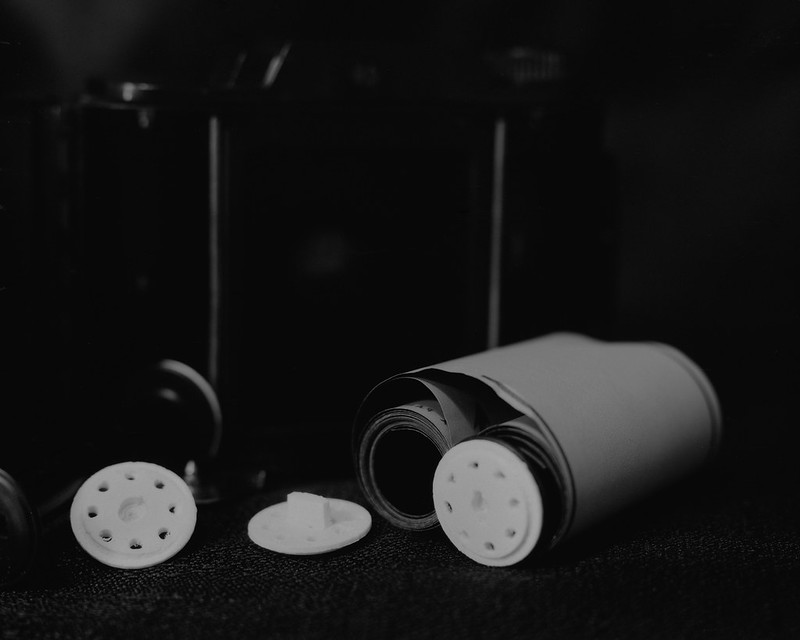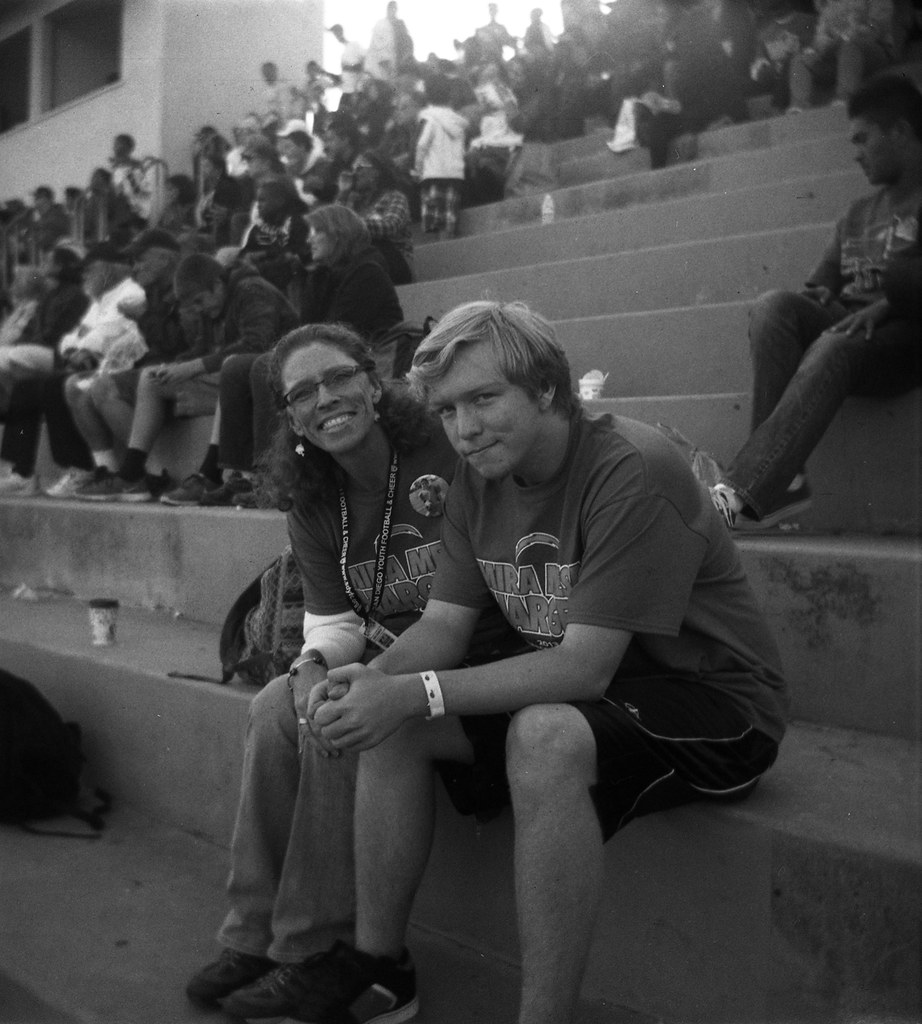I had a few cameras given to me recently. One of them was a 1939 Agfa PD16 Clipper. This was made after Agfa (Germany) and Ansco (U.S.A.) merged and this was the first camera design produced by the new company Agfa - Ansco. You can find identical Clippers with both Agfa and Ansco badges on them. It has a simple Cooke Triplet lens, so the images are nice, but a bit soft. It is fixed focus from ~5 - 12ft. It has an aperture of around f/6.5 and a shutter speed of about 1/30th - 1/40th sec. So with modern films (especially b/w) with good exposure latitude, you can shoot anything from iso 50 in bright daylight to iso 400 (box speed) or greater indoors or in dim light. The camera has a little tab that pulls out to allow "bulb" exposures so that the shutter stays open as long as you hold down the shutter release button. There is no tripod socket, so it's probably best to find a sturdy surface on which to set the camera. The front 'standard' has a little foot to keep it level. This camera was designed for the 616 rollfilm format. This film was 70mm wide compared to 60mm of the 'modern' 120 format. So with a little fanangling, you can use 120 film. By 'fanangling' I mean 'get something to extend the 120 spools enough to fit the camera and turn with the film advance knob'. I have an associate with a 3-D printer, so he did me a favor and printed up a set of spool extenders that are designed for just this purpose. You will get images from edge to edge on the 120 film and the film may not be perfectly flat in the camera, so you might want to engineer a new 6x6 mask if these imperfections bug you. I'm fine with what I get, so no need for further 'improvements'. The images are about 5x6cm, which is a 'near square' format, but not as near as 6x7, so it makes it interesting.
Here is a poor photo of the spool extenders.

Here is an example of a photo I took with my Clipper. I used Kodak Tri-X expired in 1981 and stand developed in Caffenol-C-L.

I love using these old point & shoot cameras. It is super low-tech, so there's not a lot to think about aside from composition.


No comments:
Post a Comment